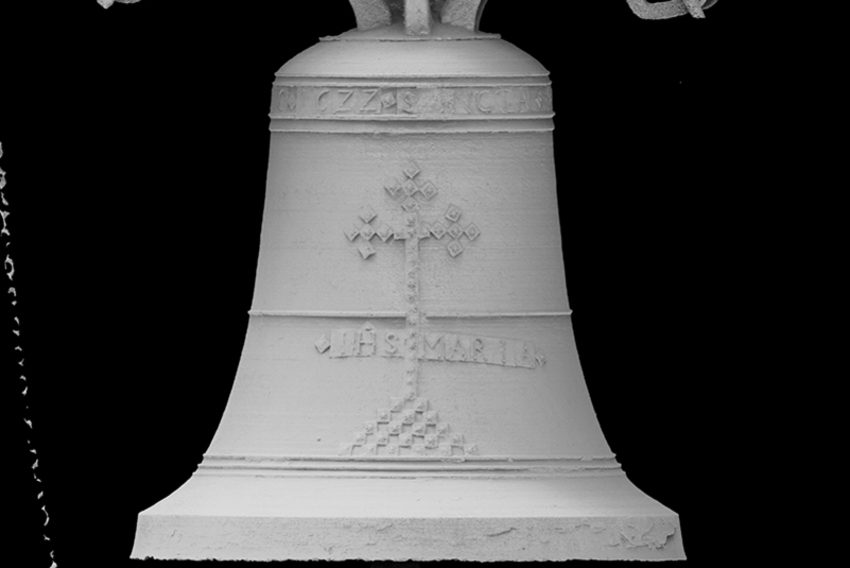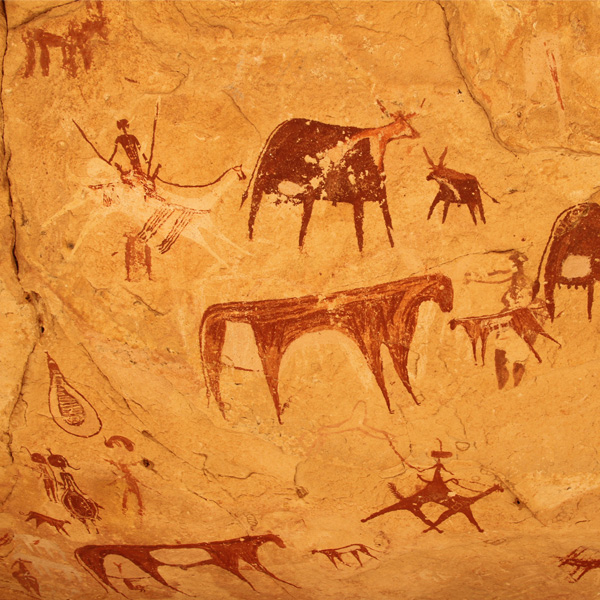An 18th-century bell: From recording to casting
In early 2020, an expert from Factum Foundation, in collaboration with Factum Arte, recorded an 18th-century bell owned by Mercedes Morénes on her property near Salamanca, Spain, using white-light scanning and photogrammetry. The data was used to create a 3D model, which was 3D-printed at Hobs 3D, London and then cast at Pangolin Editions, Gloucestershire: the analysis of the 3D data opens new possibilities for bell casting and the application of machine learning technologies to increase quality and reduce waste.
In early 2020, an expert from Factum Foundation, in collaboration with Factum Arte, recorded an 18th-century bell owned by Mercedes Morénes on her property near Salamanca, Spain, using white-light scanning and photogrammetry. The data was used to create a 3D model, which was 3D-printed at Hobs 3D, London and then cast at Pangolin Editions, Gloucestershire: the analysis of the 3D data opens new possibilities for bell casting and the application of machine learning technologies to increase quality and reduce waste.

The original bell near Salamanca, being recorded by Otto Lowe using close-range photogrammetry © Factum Foundation

The original bell near Salamanca, being recorded using close-range photogrammetry © Factum Foundation

The 3D scan of the bell recorded by Factum using white light scanning and photogrammetry © Factum Foundation

The 3D scan of the bell recorded by Factum using white light scanning and photogrammetry © Factum Foundation

The 3D scan of the bell recorded by Factum using white light scanning and photogrammetry © Factum Foundation

The 3D scan of the bell recorded by Factum using white light scanning and photogrammetry © Factum Foundation

The 3D scan of the bell recorded by Factum using white light scanning and photogrammetry © Factum Foundation

3D scan and analysis of the bell and its thickness. Analysis of the scan is critical to the success of the casting

3D scan and analysis of the bell and its thickness. Analysis of the scan is critical to the success of the casting.

 

 

Wax positive made from a rubber mould for ceramic shell investment © Pangolin Editions
Preparing the 3D print for vacuum moulding and casting © Pangolin Editions

The bell being invested in ceramic shell © Pangolin Editions

Pouring the bronze into the ceramic shell cast © Pangolin Editions

Filling the crucible with molten bronze from the furnace in preparation for the pour © Pangolin Editions

Casting of the bell © Pangolin Editions

The vacuum-cast process resulted in a perfect bell with only minimal surface cleaning required © Pangolin Editions
The sand-blasted bell before patination © Pangolin Editions

The final bell © Pangolin Editions
We are very grateful to Rungwe Kingdon at Pangolin Editions for his deep knowledge and willingness to experiment to give the art of casting bells a dynamic and viable future.






















